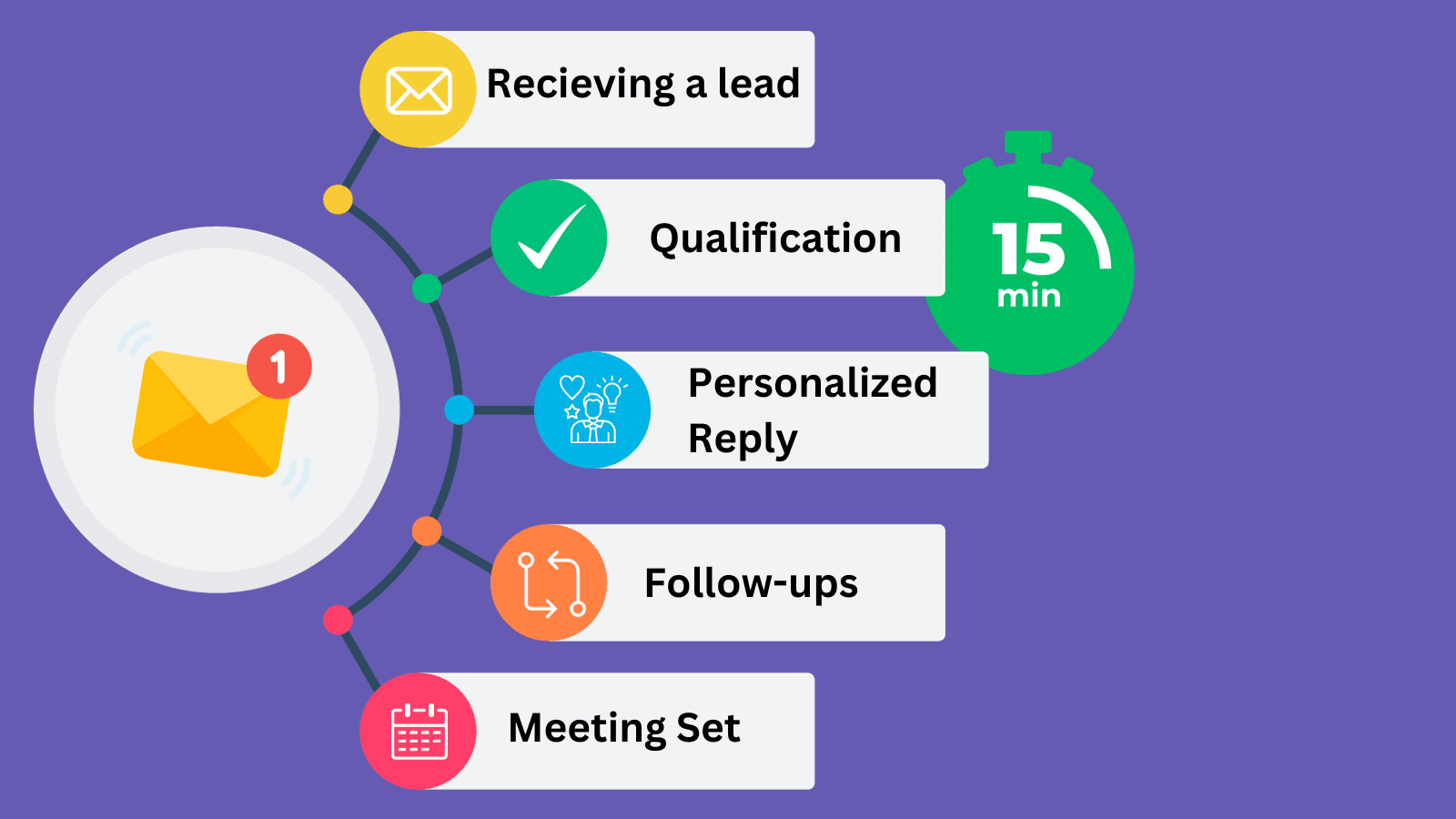In the world of inbound sales, your first encounter with a lead is a make-or-break moment. This guide will walk you through the process of turning inbound leads into successful sales meetings, focusing on swift and effective strategies. Let’s dive into the art of inbound sales, where every lead is a potential game-changer.
Understanding the Inbound Sales Process
Inbound sales differ significantly from traditional sales; here, leads come to you. The process involves several key steps:

- Receiving a Lead: Potential customers show interest in your services.
- Qualifying the Lead: Does the lead fits your Ideal Customer Profile (ICP).
- Responding to Qualified Leads: Engaging with leads who meet your criteria.
- Follow-ups: Inefficient and consumer of time and effort, as littles as possible.
- Setting the Meeting: The primary objective of your initial response.
Top Hint: The 15-Minute Personalized Reply Rule
Timing isn’t just a factor, it’s the cornerstone of success. The first three steps of the sales process are receiving a lead, qualifying it, and responding. It should ideally be executed within 15 minutes. Consistent studies and experience have shown a 2X to 3X meeting conversion.
Top 3 Reasons Why Timing is Crucial:
- Capturing Immediate Interest
- Beating the Competition
- Leveraging the Psychological Impact
Details Step Overview:
1. Receiving a Lead
- Lead Generation Channels: Understand where your leads are coming from – be it your website, social media, or referrals.
- Immediate Acknowledgment: Implement an automated system to acknowledge receipt of their inquiry.
2. Qualifying the Lead
- Gathering Intelligence: Research the lead’s company and role to evaluate and tailor your pitch.
- Fit with Offering and ICP: Evaluate how the lead aligns with what you offer and your ideal customer criteria.
- Prioritize Leads: Use a lead scoring system to prioritize leads based on their potential value.
3. The Art of the Swift Response
- Speed is Key: Respond quickly while the lead’s interest is at its peak.
- Automated vs. Personalized Responses: Balance automation with a personalized touch to show attentiveness.
- AI Writers: Generative AI can provide inspiration, and can be blazing fast in doing so. Use it, but make sure you have the last word.
4. Avoiding the Follow-up Trap
- Response Quality Assessment: The better you perform at step 3, the less you’ll have to work in the follow-up stage.
- Goal Clarity: Your aim is not to engage in a lengthy email chain but to set up a meeting.
- Effective Communication: Be clear and concise in your communication to move towards a meeting swiftly.
5. Setting the Meeting – The Main Event
- Direct Approach: Make setting a meeting the focal point of your response.
- Personalization Tactics: Tailor your response by considering the lead’s needs, company context, and role.
- Crafting the Perfect Reply:
- Build Trust and Catch Interest: Establish the right tone, acknowledge their inquiry, and introduce relevant topics.
- Asking the Right Questions: Include 1-3 questions about their needs to show engagement and pave the way for a meeting.
- Propose a Meeting for a Deep Dive: Clarify that a meeting is the best setting for detailed discussions.
- Agenda Setting: Prepare a clear agenda for the meeting that addresses the lead’s specific needs.
Conclusion: Turning Leads into Meetings
Securing a meeting in an inbound sales environment is all about quick, qualified responses and a focused approach. Remember, your goal is to convert interest into action. By following these steps, you position yourself for a successful sales journey right from the first interaction.



